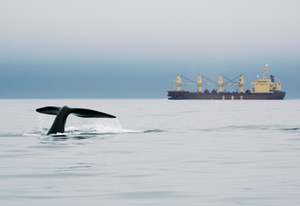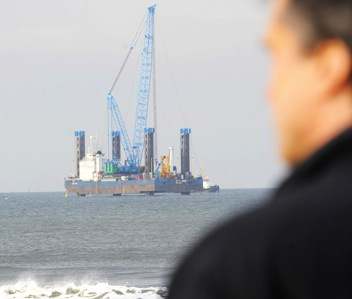Company rep: turbines causing problems in WV raised no issues in OK, TX
Human impacts, News, Wind turbines Comments Off on Company rep: turbines causing problems in WV raised no issues in OK, TXLocal news coverage of a recent meeting about the troublesome Pinnacle Wind Farm in West Virginia reveals some interesting exchanges between residents and Brad Christopher, site manager for the 23-turbine array, which is being run by Edison MIssion Group (EMG).
In particular, Christopher stressed that two other wind farms run by EMG, using the same model of turbines, have had no noise issues, but that these, in Oklahoma and Texas, are not built on mountain ridges. Christopher stressed, “I don’t like it (the noise) any more than you do.”
EMG is planning to install mufflers on the turbine cooling fans, but the noise many neighbors are describing may not be related to the fans. One neighbor, Richard Braithwaite, mentioned “a hammering sound, like thunder, when the wind is out of the west;” Christopher said that may well be blade noise, and “there is not too much to do about that.”
Another said that before construction began, an representative of the developer had “stood in my yard and guaranteed to me that there would be no noise.”
It appears that EMG and the wind farm developer, US Wind Force, may have been assuming that noise levels would closely mimic those of its wind farms in Texas and Oklahoma. Unfortunately, ridge-top turbines are more apt to experience inflow turbulence, which increases noise output and can cause bursts of louder sound, much as described by Braithwaite. Dave Friend of US Wind Force said that a sound study predicted noise output “well below” what neighbors say they’re hearing. This may be a good example of the ways siting practices that work in ranch country may not be as appropriate in other regions; not only are community noise expectations different, but noise output and propagation can be very different in complex terrain than in flat ranch and farm country.
As covered earlier on AEInews, over twenty families living on the side of the mountain are being bothered by the noise; WV state noise regulations allow sound up to 55dB, and the site was designed to just meet that limit. As neighbor Kenny Mason stressed, “We just didn’t know the windmills would be so noisy, and now we have to live with them.”

 A Canadian frigate used its mid-frequency active sonar this week during a training exercise in Haro Strait, north of San Juan Island and south of Vancouver Island. The sonar emissions from the HMCS Ottowa (right) were picked up by whale researchers at Beam Institute, who raised concerns about sonar use in an area designated by the US as critical habitat for orcas. You can read a detailed report from Beam, including sonograms and MP3 files of the sounds heard,
A Canadian frigate used its mid-frequency active sonar this week during a training exercise in Haro Strait, north of San Juan Island and south of Vancouver Island. The sonar emissions from the HMCS Ottowa (right) were picked up by whale researchers at Beam Institute, who raised concerns about sonar use in an area designated by the US as critical habitat for orcas. You can read a detailed report from Beam, including sonograms and MP3 files of the sounds heard,  A fascinating new study provides the first direct evidence that shipping noise may increase stress levels in whales. During the days after the World Trade Center attacks, global shipping was halted; a team of researchers studying right whales in the Bay of Fundy decided to go ahead and continue collecting fecal samples, and were struck by how peaceful it was: Rosalind Rolland
A fascinating new study provides the first direct evidence that shipping noise may increase stress levels in whales. During the days after the World Trade Center attacks, global shipping was halted; a team of researchers studying right whales in the Bay of Fundy decided to go ahead and continue collecting fecal samples, and were struck by how peaceful it was: Rosalind Rolland  Construction of a wind farm a bit over a mile from shore near Redcar, on the northeast coast of England, has raised the hackles of local residents. At issue is the unexpectedly loud sound of pile-driving at the site; construction of the turbine foundations entails the construction of foundations that extend 32 m (about a hundred feet) into the seabed, according to
Construction of a wind farm a bit over a mile from shore near Redcar, on the northeast coast of England, has raised the hackles of local residents. At issue is the unexpectedly loud sound of pile-driving at the site; construction of the turbine foundations entails the construction of foundations that extend 32 m (about a hundred feet) into the seabed, according to